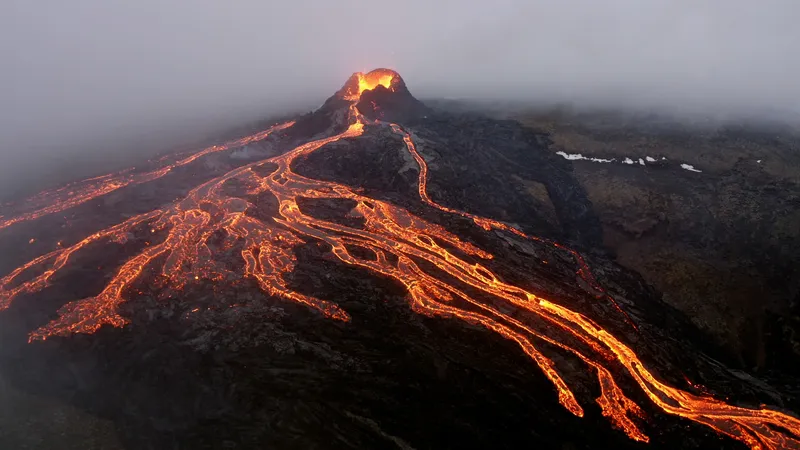Explore the fascinating world of volcanoes, from their formation to their impact on Earth’s evolution. Discover the science behind plate movements, mid-ocean ridges, and different types of volcanoes in this comprehensive guide.
Introduction
This guide delves into the fascinating world of volcanoes, exploring their formation, mechanisms, and significance in shaping our planet and captivating humanity for centuries.
Volcanic Origins
Volcanoes are crust ruptures allowing lava, ash, and gases to escape from Earth’s magma chamber, often found at tectonic plate boundaries.
Plate Movements
Subduction occurs when one plate slides under another, causing rock melting, magma accumulation, and volcanic eruptions at plate boundaries.
Mid-Ocean Ridges
In oceanic settings, volcanoes can erupt along cracks in the ocean floor known as mid-ocean ridges. Magma rising from the mantle fills these cracks, forming new crust and contributing to the Earth’s geological activity.
Types of Volcanoes
Magma composition, viscosity, and content all have a role in the creation of volcanoes; stratovolcanoes like Mount Fuji have steeper sides, whereas shield volcanoes like Mauna Loa have gentle slopes.
Unraveling the Mysteries
Volcanology is a scientific field that studies volcanoes to understand the intricate processes and implications of volcanic activity on Earth’s evolution.
FAQs
- What causes volcanic eruptions? The movement of tectonic plates, which releases magma from the Earth’s mantle, is the main source of volcanic eruptions.
- Are all volcanoes dangerous? While all volcanoes have the potential for eruptions, some are more hazardous than others due to factors such as proximity to populated areas and eruption frequency.
- Can volcanic eruptions be predicted? While scientists have made significant advancements in volcano monitoring, accurately predicting eruptions remains challenging due to the complex nature of volcanic systems.
- Do volcanoes only occur on Earth? Volcanic activity has been observed on Mars, Venus, and Jupiter’s moon Io, indicating similar geological processes are occurring throughout the solar system.
- How do volcanoes impact the climate? Volcanic eruptions can release large amounts of gases and ash into the atmosphere, which can temporarily cool the Earth’s surface by blocking sunlight.
- What are some famous supervolcanoes? Supervolcanoes, including Yellowstone Caldera in the US, Lake Toba in Indonesia, and Taupo Volcano in New Zealand, are a type of volcanic activity.
Conclusion
Scientists are studying volcanoes to gain a comprehensive understanding of Earth’s past, present, and future, providing valuable insights into its intricate functioning.

